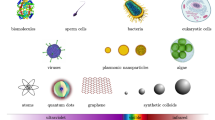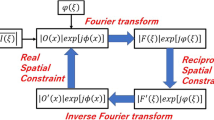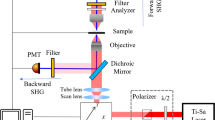Abstract
Advances in the technologies for labeling and imaging biological samples drive a constant progress in our capability of studying structures and their dynamics within cells and tissues. In the last decade, the development of numerous nonlinear optical microscopies has led to a new prospective both in basic research and in the potential development of very powerful noninvasive diagnostic tools. These techniques offer large advantages over conventional linear microscopy with regard to penetration depth, spatial resolution, three-dimensional optical sectioning, and lower photobleaching. Additionally, some of these techniques offer the opportunity for optically probing biological functions directly in living cells, as highlighted, for example, by the application of second-harmonic generation to the optical measurement of electrical potential and activity in excitable cells. In parallel with imaging techniques, nonlinear microscopy has been developed into a new area for the selective disruption and manipulation of intracellular structures, providing an extremely useful tool of investigation in cell biology. In this review we present some basic features of nonlinear microscopy with regard both to imaging and manipulation, and show some examples to illustrate the advantages offered by these novel methodologies.
Similar content being viewed by others
References
Shimomura, O., Johnson, F. H., and Saiga, Y. (1962) Extraction, purification and properties of aequorin, a bioluminescent protein from the luminous hydromedusan. Aequorea. J. Cell Comp. Physiol. 59, 223–239.
Shimomura, O. (1998) The discovery of green fluorescent protein. In Green Fluorescent Protein: Properties, Applications, and Protocols (Chalfie, M., and Kain, S., eds.), Wiley-Liss, New York, pp. 1–14.
Chalfie, M., Tu, Y., Euskirchen, G., Ward, W. W., and Prasher, D. C. (1994) Green fluorescent protein as a marker for gene expression. Science 263, 802–805.
Rizzo, M. A. and Piston, D. W. (2005) Fluorescent protein tracking and detection. In Live Cell Imaging. A Laboratory Manual (Goldman, R. D. and Spector, D. L., eds.). Cold Spring Harbor Laboratory Press, Cold Spring Harbor, NY, pp. 3–24.
Isenberg, G., Bielser, W., Meier-Ruge, W., and Remy, E. (1976) Cell surgery by laser micro-dissection: a preparative method. J. Microsc. 107, 19–24.
Bustamante, C., Smith, S. B., Liphardt, J., and Smith, D. (2000) Single-molecule studies of DNA mechanics. Curr. Opin. Struct. Biol. 10, 279–285.
Capitanio, M., Vanzi, F., Broggio, C., et al. (2004) Exploring molecular motor and switches at the single-molecule level. Microsc. Res. Tech. 65, 194–204.
Ashkin, A., Dziedzic, J. M., and Yamane, T. (1987) Optical trapping and manipulation of single cells using infrared laser beams. Nature 330, 769–771.
Ashkin, A. and Dziedzic, J. M. (1987) Optical trapping and manipulation of viruses and bacteria. Science, 235, 1517–1520.
Zipfel, W. R., Williams, R. M., and Webb, W. W. (2003) Nonlinear magic: multiphoton microscopy in the bioscience. Nat. Biotech. 21, 1369–1377.
Zipfel, W. R., Williams, R. M., Christie, R., Nikitin, A. Y., Hyman, B. T., and Webb, W. W. (2003) Live tissue intrinsic emission microscopy using multiphoton-excited native fluorescence and second harmonic generation. Proc. Natl. Acad. Sci. USA 100, 7075–7780.
Miller, M. J., Wei, S. H., Parker, I., and Cahalan, M. D. (2002) Two-photon imaging of lymphocyte motility and antigen response in intact lymph node. Science 296, 1869–1873.
Maiti, S., Shear, J. B., Williams, R. M., Zipfel, W. R., and Webb, W. W. (1997) Measuring serotonin distribution in live cells with three-photon excitation. Science 275, 530–532.
Boyde, A. (1994) Bibliography on confocal microscopy and its applications. Scanning 16, 33–56.
Lichtman, J. W. (1994) Confocal microscopy. Scientific Am. 271, 40–45.
Pawley, J. B., The Handbook of Biological Confocal Microscopy. Plenum, New York, 1990.
White, J. G., Amos, W. B., and Fordham, M. (1987) An evaluation of confocal versus conventional imaging of biological structures by fluorescence light microscopy. J. Cell. Biol. 105, 41–48.
Wilson, T. and Sheppard, C., Theory and Practice of Scanning Optical Microscopy. Academic Press, London 1994.
Centonze, V. E. and White, J. G. (1998) Multiphoton excitation provides optical sections from deeper within scattering specimens than confocal imaging. Biophys J. 75, 2015–2024.
Soeller, A. and Cannell, M. B. (1999) Two-photon microscopy: imaging in scattering samples and three-dimensionally resolved flash photolysis. Microsc. Res. Tech. 47, 182–195.
Periasamy, A., Skoglund, P., Noakes, C., and Keller R. (1999) An evaluation of two-photon versus confocal and digital deconvolution fluorescence microscopy imaging in Xenopus morphogenesis. Microsc. Res. Tech. 47, 172–181.
Squirrel, J. M., Wokosin, D. L., White, J. G., and Bavister, B. D. (1999) Long-term two-photon fluorescence imaging of mammalian embryos without compromising viability. Nat. Biotechnol. 17, 763–767.
Konig, K., So, P. T., Mantulin, W. W., Tromberg, B. J., and Gratton, E. (1996) Two-photon excited lifetime imaging of autofluorescence in cell during UVA and NIR photostress. J. Microsc. 183, 197–204.
Koester, H. J., Baur, D., Uhl, R., and Hell, S. W. (1999) Ca2+ fluorescence imaging with pico- and femtosecond two-photon excitation: signal and photodamage. Biophys. J. 77, 2226–2236.
Hopt, A. and Neher, E. (2001) Highly nonlinear photodamage in two-photon fluorescence microscopy. Biophys. J. 80, 2029–2036.
Campagnola, P. J. and Loew, L. (2003) Second-harmonic imaging microscopy for visualizing biomolecular arrays in cells, tissues and organisms. Nat. Biotechnol. 21, 1356–1360.
Dombeck, D. A., Kasischke, K. A., Vishwasrao, H. D., Ingelsson, M., Hyman, B. T., and Webb, W. W. (2003) Uniform polarity microtubule assemblies imaged in native brain tissue by second-harmonic generation microscopy. Proc. Natl. Acad. Sci. USA 100, 7081–7086.
Dombeck, D. A., Blanchard-Desce, M., and Webb, W. W. (2004) Optical recording of action potentials with second-harmonic generation microscopy. J. Neurosci. 24, 999–1003.
Goppert-Mayer, M. (1931) Uber Elementarekte mit zwei Quantensprunger. Ann. Phys. 9, 273.
Kaiser, W. and Garret, C. G. B. (1961) Two-photon excitation in CaF2∶Eu2+. Phys. Rev. Lett. 7, 229–231.
Denk, W., Strickler, H. J., and Webb, W. W. (1990) Two-photon laser scanning fluorescence microscopy. Science 248, 73–76.
Williams, R. M., Piston, D. W., and Webb, W. W. (1994) Two-photon molecular excitation provides intrinsic 3-dimensional resolution for laser-based microscopy microphotochemistry. FASEB J. 8, 804–813.
Yuste, R. and Denk, W. (1995) Dendritic spine as basic function units of neuronal integration. Nature 375, 682–684.
Svodoba, K., Tank, D. W., and Denk, W. (1996) Direct measurement of coupling between dendritic spines and shafts. Science 272, 716–719.
Denk, W., Piston, D. W., and Webb, W. W.. The Handbook of Confocal Microscopy, Plenum, New York, 1995.
Ashkin, A. (1970) Acceleration and trapping of particles by radiation pressure. Phys. Rev. Lett. 24, 156–159.
Ashkin, A. (1971) Optical levitation by radiation pressure. Appl. Phys. Lett. 19, 283–285.
Ashkin, A., Dziedzic, J. M., Bjorkholm, J. E., and Chu, S. (1986) Observation of a single-beam gradient force optical trap for dielectric particles. Opt. Lett. 11, 288–290.
McCully, E. K. and Robinow, C. F. (1971) Mitosis in the fission yeast Schizosaccharomyces pombe: a comparative study with light and electron microscopy. J. Cell Sci. 9, 475–507.
Svoboda, K., and Block, M. S. (1994) Biological applications of optical forces. Ann. Rev. Biophys. Biomol. Struct. 23, 247–85.
Isenberg, G., Bielser, W., Meier-Ruge, W., and Remy, E. (1976) Cell surgery by laser micro-dissection: a preparative method. J. Microsc. 107, 19–24.
Aist, J. R. and Berns, M. W. (1981) Mechanics of chromosome separation during mitosis in Fusarium (Fungi imperfecti): new evidence from ultrastructural and laser microbeam experiments. J. Cell Biol. 91, 446–458.
Leslie, R. J. and Pickett-Heaps, J. D. (1983) Ultraviolet microbeam irradiations of mitotic diatoms: investigation of spindle elongation. J. Cell. Biol. 96, 548–561.
Grill, S. W., Gonczy, P., Stelzer, E. H., and Hyman, A. A. (2001) Polarity controls forces governing asymmetric spindle positioning in the Caenorhabditis elegans embryo. Nature 409, 630–633.
Grill, S. W., Howard, J., Schaffer, E., Stelzer, E. H., and Hyman, A. A. (2003) The distribution of active force generators controls mitotic spindle position. Science 301, 518–521.
Khodjakov, A., Cole, R. W., and Rieder, C. L. (1997) A synergy of technologies: combining laser microsurgery with green fluorescent protein tagging. Cell Motil. Cytoskeleton 38, 311–317.
Konig, K., Riemann, I., and Fritzsche, W. (2001) Nanodissection of human chromosomes with near-infrared femtosecond laser pulses. Opt. Lett. 26, 819–821.
Tirlapur, U. K. and Konig, K. (2002) Femtosecond near-infrared laser pulses as a versatile non-invasive tool for intra-tissue nanoprocessing in plants without compromising viability. Plant J. 31, 365–374.
Tolic-Nørrelykke, I. M., Sacconi, L., Thon, G., and Pavone, F. S. (2004) Positioning and elongation of the fission yeast spindle by microtubule-based pushing. Curr. Biol. 14, 1181–1186.
Sacconi, L., Tolic-Nørrelykke, I. M., Antolini, R., and Pavone, F. S. (2005) Combined intracellular three-dimensional imaging and selective nanosurgery by a nonlinear microscope. J. Biomed. Opt. 10, 014002.
Hagan, I. M. (1998) The fission yeast microtubule cytoskeleton. J. Cell Sci. 111, 1603–1612.
Vogel, A. and Venugopalan, V. (2003) Mechanisms of pulsed laser ablation of biological tissues. Chem. Rev. 103, 577–644.
Berns, M. W., Aist, J. R., Wright, W. H., and Liang, H. (1992) Optical trapping in animal and fungal cells using a tunable, near-infrared titanium-sapphire laser. Exp. Cell Res. 198, 375–378.
Ashkin, A. and Dziedzic, J. M. (1989) Internal cell manipulation using infrared laser traps. Proc. Natl. Acad. Sci. USA 86, 7914–7918.
Berns, M. W., Wright, W. H., Tromberg, B. J., Profeta, G. A., Andrews, J. J., and Walter, R. J. (1989) Use of a laser-induced optical force trap to study chromosome movement on the mitotic spindle. Proc. Natl. Acad. Sci. USA 86, 4539–4543.
Ketelaar, T., Faivre-Moskalenko, C., Esseling, J. J., et al. (2002) Positioning of nuclei in Arabidopsis root hairs: an actin-regulated process of tip growth. Plant Cell 14, 2941–2955.
Tran, P. T., Marsh, L., Doye, V., Inoue, S., and Chang, F. (2001) A mechanism for nuclear positioning in fission yeast based on microtubule pushing. J. Cell Biol. 153, 397–411.
Daga, R. R. and Chang, F. (2005) Dynamic positioning of the fission yeast cell division plane. Proc. Natl. Acad. Sci. USA 102, 8228–8232.
Neuman, I. C., Chadd, E. H., Liou, G. F., Bergman, K., and Block, S. M. (1999) Characterization of photodamage to Escherichia coli in optical traps. Biophys. J. 77, 2856–2863.
Sacconi, L., Tolic-Nørrelykke, I. M., Stringari, C., Antolini, R., and Pavone, F. S. (2005) Optical micromanipulations inside yeast cells. Appl. Opt. 44, 2001–2007.
Visser, T. D. and Wiersma, S. H. (1992) Diffraction of converging electromagnetic waves. J. Opt. Soc. Am. A 9, 2034–2047.
Tran, P. T., Marsh, L., Doye, V., Inoue, S., and Chang, F. (2001) A mechanism for nuclear positioning in fission yeast based on microtubule pushing. J. Cell Biol. 153, 397–411.
Tolic-Norrelykke, I. M., Sacconi, L., Stringari, C., and Pavone, F. S. (2005) Nuclear and division plane positioning revealed by optical micromanipulation. Curr. Biol. 15, 1212–1218.
Bloembergen, N. Nonlinear Optic. World Scientific, 1965.
Moreaux, L., Sandre, O., and Mertz, J. (2000) Membrane imaging by second-harmonic generation microscopy. J. Opt. Soc. Am. B 17, 1685–1694.
Shen, Y. R. (1989) Surface properties probed by second-harmonic and sum-frequency generation. Nature 337, 519–525.
Hellwarth, R. and Christensen, P. (1974) Nonlinear optical microscopic examination of structure in polycrystalline ZnSe. Opt. Com. 12, 318–322.
Gennaway, J. and Sheppard, C. J. R. (1978) Second-harmonic imaging in the scanning optical microscope. Opt. Quant. Elect. 10, 435–439.
Ben-Oren, I., Peleg, G., Lewis, A., Minke, B., and Loew, L. (1996) Infrared nonlinear optical measurements of membrane potential in photoreceptor cells. Biophys. J. 71, 1616–1620.
Peleg, G., Lewis, A., Linial, M., and Loew, L. M. (1999) Non-linear optical measurement of membrane potential around single molecules at selected cellular sites. Proc. Natl. Acad. Sci. USA 96, 6700–6704.
Lewis, A., Khatchattouriants, A., Trenin, M. et al. (1999) Second harmonic generation of biological interfaces: probing the membrane protein bacteriorhodopsin and imaging membrane potential around GFP molecules at specific sites in neuronal cells of C. Elegans. Chem. Phys. 245, 133–144.
Cohen, I. B. and Salzberg, B. M. (1978) Optical measurement of membrane potential. Rev. Physiol. Biochem. Pharmacol. 83, 35–88.
Bouevitch, O., Lewis, A., Pinevsky, I., Wuskell, J. P., and Loew, L. M. (1993) Probing membrane potential with nonlinear optics. Biophys. J. 65, 672–679.
Campagnola, P. J., Wei, M., Lewis, A., and Loew, L. M. (1999) High resolution nonlinear optical imaging of live cells by second harmonic generation. Biophys. J. 77, 3341–3349.
Moreaux, L., Pons, T., Dambrin, V., Blanchard-Desce, M., and Mertz, J. (2003) Electro-optic response of second-harmonic generation membrane potential sensors. Opt. Lett. 28, 625–627.
Pons, T., Moreaux, L., Mongin, O., Blanchard-Desce, M., and Mertz, J. (2003) Mechanisms of membrane potential sensing with second-harmonic generation microscopy. J. Biomed. Opt. 8, 428–431.
Millard, A. C., Jin, L., Lewis, A., and Loew, L. M. (2003) Direct measurement of the voltage sensitivity of second harmonic generation from a membrane dye in patchclamped cells. Opt. Lett. 28, 1221–1223.
Millard, A. C., Jin, L., Wei, M. D., Wuskell, J. P., Lewis, A., and Loew, L. M. (2004) Sensitivity of second harmonic generation from styryl dyes to transmembrane potential. Biophys. J. 86, 1169–1176.
Sacconi, L., D'Amico, M., Vanzi, F. et al. (2005) Second harmonic generation sensitivity to transmembrane potential in normal and tumor cells. J. Biomed. Opt. 10, 024014.
Rajfur, Z., Roy, P., Otey, C., Romer, L., and Jacobson, K. (2002) Dissecting the link between stress fibres and focal adhesions by CALI with EGFP fusion proteins. Nat. Cell Biol. 2, 286–294.
Sakurai, T., Wong, E., Drescher, U., Tanaka, H., and Jay, D. G. (2002), Ephrin-A5 restricts topographically specific arborization in the chick retinotectal projection in vivo. Proc. Natl. Acad. Sci. USA 99, 10,795–10,800.
Horstkotte, A., Schroder, T., Niewohner, J., Thiel, E., Jay, D., and Henning, S. (2004) Towards understanding the mechanism of CALI—evidence for the primary photochemical steps. Photochem. Photobiol. Epub ahead of print.
Sacconi, L., Froner, E., Antolini, R., Taghizadeh, M. R., Choudhury, A., and Pavone, F. S. (2003) Multiphoton multifocal microscopy exploiting a diffractive optical element. Opt. Lett. 28, 1918–1920.
Author information
Authors and Affiliations
Corresponding author
Rights and permissions
About this article
Cite this article
Sacconi, L., Tolic-Nørrelykke, I.M., D'Amico, M. et al. Cell imaging and manipulation by nonlinear optical microscopy. Cell Biochem Biophys 45, 289–302 (2006). https://doi.org/10.1385/CBB:45:3:289
Issue Date:
DOI: https://doi.org/10.1385/CBB:45:3:289




